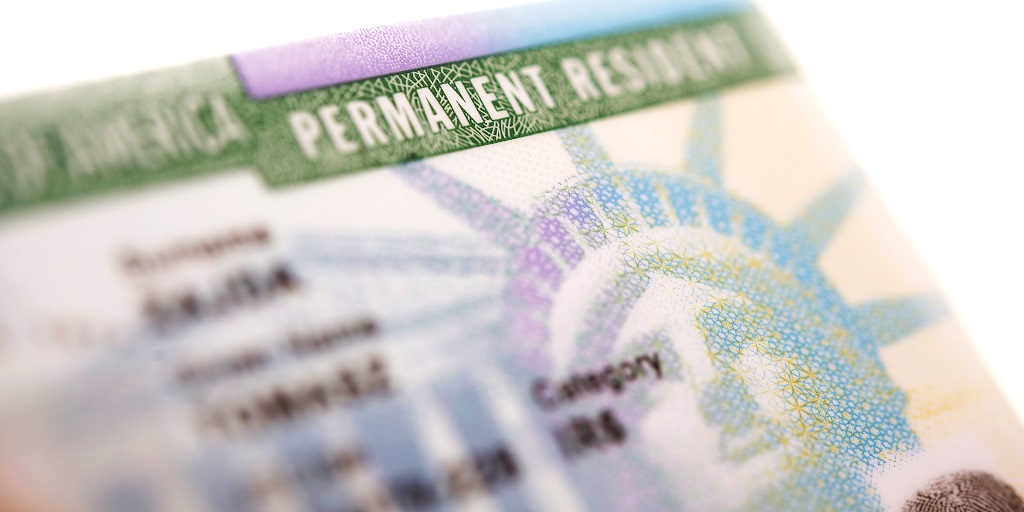A recent policy change by U.S. Citizenship and Immigration Services (USCIS) should reduce the number of children who age out of green card eligibility.
For immigration purposes, a “child” means someone who is under 21 years old and unmarried. Because of backlogs, noncitizens whose only path to a green card depends on being classified as a “child” can be shut out entirely when they turn 21 years old. Some noncitizens may be eligible in other family-based categories after they turn 21 but will wait far longer in those categories.
For over 20 years, the Child Status Protection Act (CSPA) has allowed some children who turned 21 to preserve their green card eligibility by “locking” their age at under 21. The key to CSPA eligibility is the child’s age “on the date on which an immigrant visa number becomes available.” However, for several years, USCIS policy drew a strained distinction between when an immigrant visa number is available for the purpose of triggering the immigrant visa process and for triggering CSPA protection.
Congress has placed annual and per country quotas on family- and employment-based immigrant visa categories. The State Department publishes a monthly Visa Bulletin with charts of immigrant visa availability for the quota categories. Noncitizens can determine—based on their immigrant visa category and country of birth—when they become eligible to initiate the immigrant visa application process or to file an application to adjust status to lawful permanent resident (LPR) with USCIS, if applicable.
Under the CSPA, if the child takes certain action toward receiving an immigrant visa or adjusting status to LPR within one year of “the date on which an immigrant visa number becomes available,” then the child’s age will be reduced by the number of days the applicable visa petition was pending.
Before Fiscal Year 2016, the Visa Bulletin had only one chart each for family- and employment-based quota categories. However, the Visa Bulletin for October 2015, the start of Fiscal Year 2016, contained two charts each for family-based and for employment-based quota categories: “Final Action Dates” and “Dates for Filing.” The “Final Action Dates” chart corresponds to immigrant visa numbers authorized for issuance. The “Dates for Filing” chart corresponds to a time frame in which a visa number can be considered immediately available but is not available on the date the application is submitted or when processing begins. (Applicants for diversity visas also face quotas, but their CSPA eligibility was not affected by this change since the Visa Bulletin continues to have only one chart for them.)
From October 2015 onward, USCIS has published monthly on its website which chart applicants to adjust status to LPR in a particular family- or employment-based category must use, depending on the agency’s determination of visa number availability.
USCIS then created a problem because it interpreted “the date on which an immigrant visa number becomes available” for CSPA eligibility as being limited to the “Final Action Dates” chart. Frequently the “Final Action Dates” are more restrictive (i.e., the “Final Action Dates” chart may cut off at a chronologically earlier date than the “Dates for Filing” chart for the same category, which means fewer applicants would be able to file if the “Final Action Dates” chart applied than the “Dates for Filing” chart).
Because of this strained interpretation, noncitizens who filed for adjustment of status based on the “Dates for Filing” chart did not know if they would achieve CSPA eligibility because USCIS would only calculate their age when a visa number was available based on the “Final Action Dates” chart. Applicants who would have received an under 21 calculation with the “Dates for Filing Chart,” often would be too old if calculated with the “Final Action Dates” chart.
USCIS incorporated this interpretation into its Policy Memorandum in May 2018. The American Immigration Lawyers Association, among others, advocated for USCIS to change its interpretation. It estimated that hundreds, if not thousands of families would benefit. A federal case that includes a challenge to the agency’s interpretation has been pending before the Ninth Circuit federal appellate court.
Nearly five years later, USCIS has updated its Policy Manual and will no longer distinguish between the “Final Action Dates” and “Dates for Filing” charts. Instead, the agency now calculates the CSPA age at the same time and in the same manner as it calculates visa availability for the purpose of adjustment of status. USCIS’ interpretation applies to adjustment of status applications decided on or after February 14, 2023.
In announcing the policy change, USCIS mentioned that noncitizens whose adjustment of status applications were denied could file a motion to reopen (Form I-290B) with the agency. But the current filing fee is $675 and the agency maintains discretion to accept such a motion if filed later than 30 days after the denial. USCIS also has not addressed the plight of noncitizens who did not file applications to adjust their status to LPR because under USCIS’ prior interpretation they could not achieve CSPA eligibility.
While the age out change is welcome, the agency has not gone far enough to ensure everyone who should be eligible can receive a green card.
FILED UNDER: green card, USCIS


